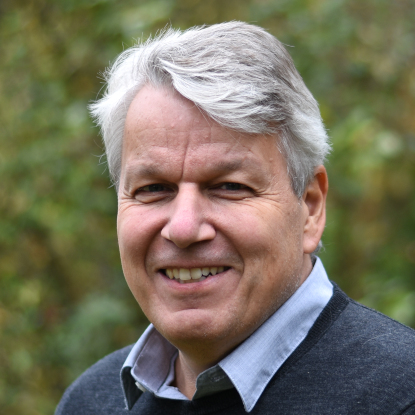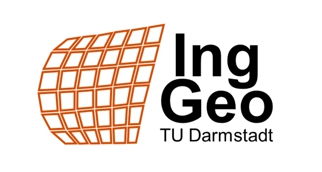
Prof. Dr. Andreas Henk
Kontakt
henk@geo.tu-...
work +49 6151 16-22344
Work
B2|02 209
Schnittspahnstraße 9
64287
Darmstadt
- Reservoir Geomechanik
- Geomechanische Lagerstättenmodellierungen
- Kluftnetzwerke in Aufschlussanaloge
Juli 1997
Habilitation, Julius-Maximilians-Universität Würzburg
Thema: „Thermomechanische Modellrechnungen zur post- konvergenten Krustenreequilibrierung der Varisciden“
Februar 1991
Promotion, Julius-Maximilians-Universität Würzburg
Thema: „Struktur und geodynamische Entwicklung des Saar- Nahe-Beckens“
Oktober 1980 – Dezember 1984
Studium der Geologie, Johannes-Gutenberg-Universität Mainz
Seit März 2012
Professor für Ingenieurgeologie, Technische Universität Darmstadt, Institut für Angewandte Geowissenschaften
Okober 2000 – Februar 2012
Professor für Angewandte Geologie, Albert-Ludwigs-Universität Freiburg, Institut für Geowissenschaften
Sepember 1987 – September 2000
Wissenschaftlicher Mitarbeiter, Assistent bzw. Oberassistent, Julius-Maximilians-Universität Würzburg, Institut für Geologie
März 1985 – August 1987
Wellsite Petroleum Engineer, Shell Internationale Petroleum Maatschappij, Den Haag, Niederlande
2009
Best-of-EAGE Award für Vortrag bei Jahrestagung der European Association of Geoscientists and Engineers (EAGE) in Amsterdam
2005
Distinguished Lecturer der European Association of Geoscientists and Engineers (EAGE)
1997
Hermann-Credner-Preis der Deutschen Geologischen Gesellschaft (DGG)
1996
Preisträger der Jubiläumsstiftung zum 400jährigen Bestehen der Julius-Maximilians-Universität Würzburg
1984
Förderstipendium der Johannes-Gutenberg-Universität Mainz
Meine aktuellen Publikationen finden Sie im Bereich Veröffentlichungen .
2008
Henk, A. & Nemcok, M. (2008): Stress and fracture prediction in inverted halfgraben structures. – Journal of Structural Geology, 30: 81 – 97.
2006
Nemcok, M. & HENK, A. (2006): Oil reservoirs in foreland basins charged by thrustbelt source rocks: Insights from numerical stress modeling and geometric balancing in the West Carpathians. – In: BUITER, S.J.H. & SCHREURS, G. (eds.): Analogue and numerical modelling of crustal-scale processes. – Geological Society, London, Special Publications, 253: 415 – 428.
SEYFERTH, M. & HENK, A. (2006): A numerical sandbox – high-resolution distinct element models of halfgraben formation. – International Journal of Earth Sciences, 95: 189-203.
HENK, A. (2006): Stress and strain during fault-controlled lithospheric extension – insights from numerical experiments. – Tectonophysics, 415: 39-55.
2005
HENK, A. (2005): Pre-drilling prediction of the tectonic stress field with geomechanical models. – First Break, 23/11: 53 – 57.
SCHWARZ, M. & HENK, A. (2005): Evolution and structure of the Upper Rhine Graben – insights from threedimensional thermomechanical modeling. – International Journal of Earth Sciences, 94/4: 732 – 750.
HENK, A. & TIMMERMAN, M. (2005): Permian basins. – In: SELLEY, R.C., COCKS, R. & PILMER, I (eds.): Encyclopedia of Geology, Elsevier, 95 – 102.
2004
SEYFERTH, M. & HENK, A. (2004): Syn-convergent exhumation and lateral extrusion in continental collision zones – insights from threedimensional numerical models. – Tectonophysics, 382: 1 – 29.
2002
SEYFERTH, M. & HENK, A. (2002): Coupling of PFC2D and ANSYS® – concepts to combine the best of two worlds for improved geodynamic models. In: KONIETZKY, H. (ed.): Numerical Modeling in Micromechanics via Particle Methods. – Balkema Publishers: 283 – 290.
NEMCOK, M., HENK, A., GAYER, R.A., VANDYCKE, S. & HATHAWAY, T.M. (2002): Strike-slip fault bridge fluid pumping mechanism; insights from numerical modelling and field-based palaeostress analysis. – Journal of Structural Geology, 24: 1885-1901.
2000
HENK, A., v. BLANCKENBURG, F., FINGER, F., SCHALTEGGER, U. & ZULAUF, G. (2000): Syn-convergent high-temperature metamorphism and magmatism in the Variscides – a discussion of potential heat sources. – In: FRANKE, W., HAAK, V., ONCKEN, O. & TANNER, D. (eds.): Orogenic Processes: Quantification and Modeling in the Variscan Belt of Central Europe. Geological Society, London, Special Publication, 179: 387-399.
SEYFERTH, M & HENK, A. (2000): Deformation, metamorphism and exhumation – quantitative models for a continental collision zone in the Variscides. – In: FRANKE, W., HAAK, V., ONCKEN, O. & TANNER, D. (eds.): Orogenic Processes: Quantification and Modeling in the Variscan Belt of Central Europe. Geological Society, London, Special Publication, 179: 217-230.
HENK, A. (2000): Foreland-directed lower crustal flow and its implications for the exhumation of high pressure / high temperature rocks. – In: FRANKE, W., HAAK, V., ONCKEN, O. & TANNER, D. (eds.): Orogenic Processes: Quantification and Modeling in the Variscan Belt of Central Europe. Geological Society, London, Special Publication, 179: 355-368.
GERDES, A., WÖRNER, G. & HENK, A. (2000): Post-collisional granite generation and HT-LP metamorphism by radiogenic heating: the Variscan South Bohemian Batholith. – Journal of the Geological Society, London, 157: 577-587.
1999
HENK, A. (1999): Did the Variscides collapse or were they torn apart? – A quantitative evaluation of the driving forces for post-convergent extension in Central Europe. – Tectonics, 18: 774-792.
1998
HENK, A. (1998): Thermomechanische Modellrechnungen zur postkonvergenten Krustenreequilibrierung in den Varisciden. – Geotektonische Forschungen, 90: 124 S.
1997
HENK, A. (1997): Gravitational orogenic collapse versus plate boundary stresses – a numerical modeling approach to the Permo-Carboniferous evolution of Central Europe. – Geologische Rundschau, 86: 39 – 55.
HENK, A., FRANZ, L., TEUFEL, S. & ONCKEN, O. (1997): Magmatic underplating, extension, and crustal reequilibration: insights from a cross section through the Ivrea Zone and Strona-Ceneri Zone, northern Italy. – Journal of Geology, 105: 367 – 377.
HENK, A. (1997): Thermo-mechanical modeling of late-orogenic extension – a study from the Variscan orogen of Central Europe. – In: ZHIQIN, X., YUFENG, R. & XIAOPING,Q. (ed.): Proceedings of the 30th International Geological Congress – Vol. 7: Orogenic Belts and Geological Mapping. – International Science Publishers, Zeist: 21 – 38.
1996
HENK, A. (1996): Late-orogenic burial and exhumation at a major Variscan suture zone – constraints from thermal modeling. – In: ONCKEN, O. & JANSSEN, C. (eds.): Basement Tectonics 11 – Proceedings of the Eleventh International Conference on Basement Tectonics. – Kluwer Academic Publishers, Dordrecht: 3-15.
1995
HENK, A. (1995): Late-Variscan exhumation history of the western Mid-German Crystalline Rise and southern Rhenohercynian zone – results from geothermal modeling. – Geologische Rundschau, 84: 578-590.
1993
HENK, A. (1993): Subsidenz und Tektonik des Saar – Nahe – Beckens (SW-Deutschland). – Geologische Rundschau, 82: 3-19.
HENK, A. (1993): Das Saar-Nahe-Becken – eine geodynamische Beckenanalyse. – Die Geowissenschaften, 11/8: 268-273.
HENK, A. (1993): Late-orogenic basin evolution in the Variscan Internides: the Saar-Nahe-Basin, southwest Germany. – Tectonophysics, 223: 273-290.
1992
HENK, A. (1992): Mächtigkeit und Alter der erodierten Sedimente im Saar-Nahe-Becken (SW-Deutschland). – Geologische Rundschau, 81: 323-331.
1991
DEKORP RESEARCH GROUP (1991): Results of DEKORP 1 (BELCORP-DEKORP) deep seismic reflection studies in the western part of the Rhenish Massif. – Geophysical Journal International, 106, 203-227.
HENK, A. (1991): Structure of the Saar-Nahe-Basin (SW-Germany) from DEKORP profiles 1-C and 9-N. – In: MEISSNER, R., BROWN, L., DÜRBAUM, H.-J., FRANKE, W., FUCHS, K. & SEIFERT, F. (Ed.): Continental Lithosphere – Deep Seismic Reflections. – American Geophysical Union, Geodynamics Series, v. 22: 91-95.


